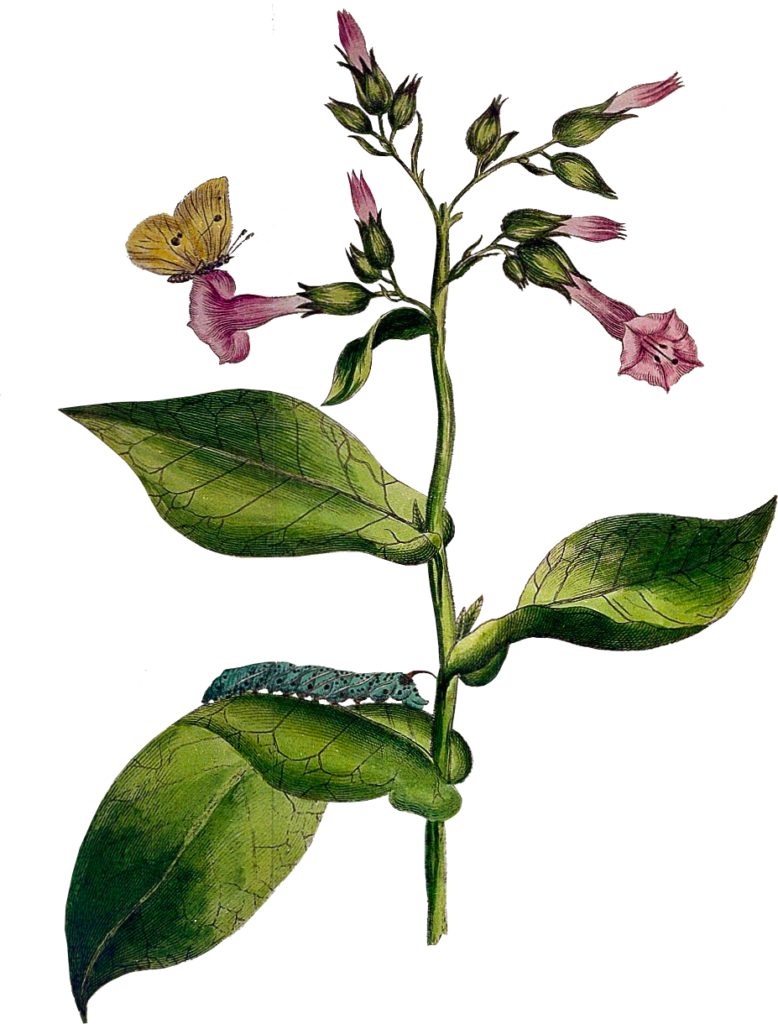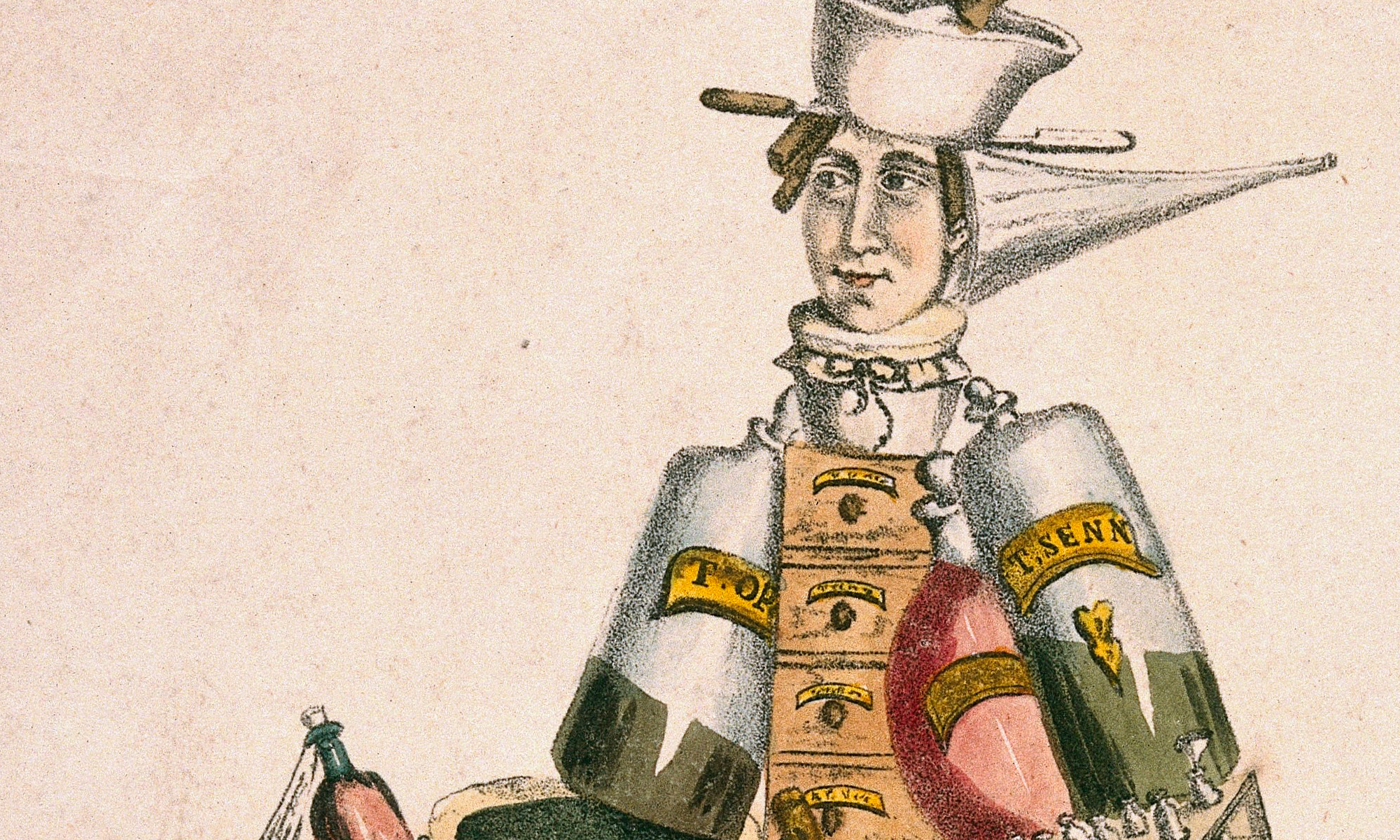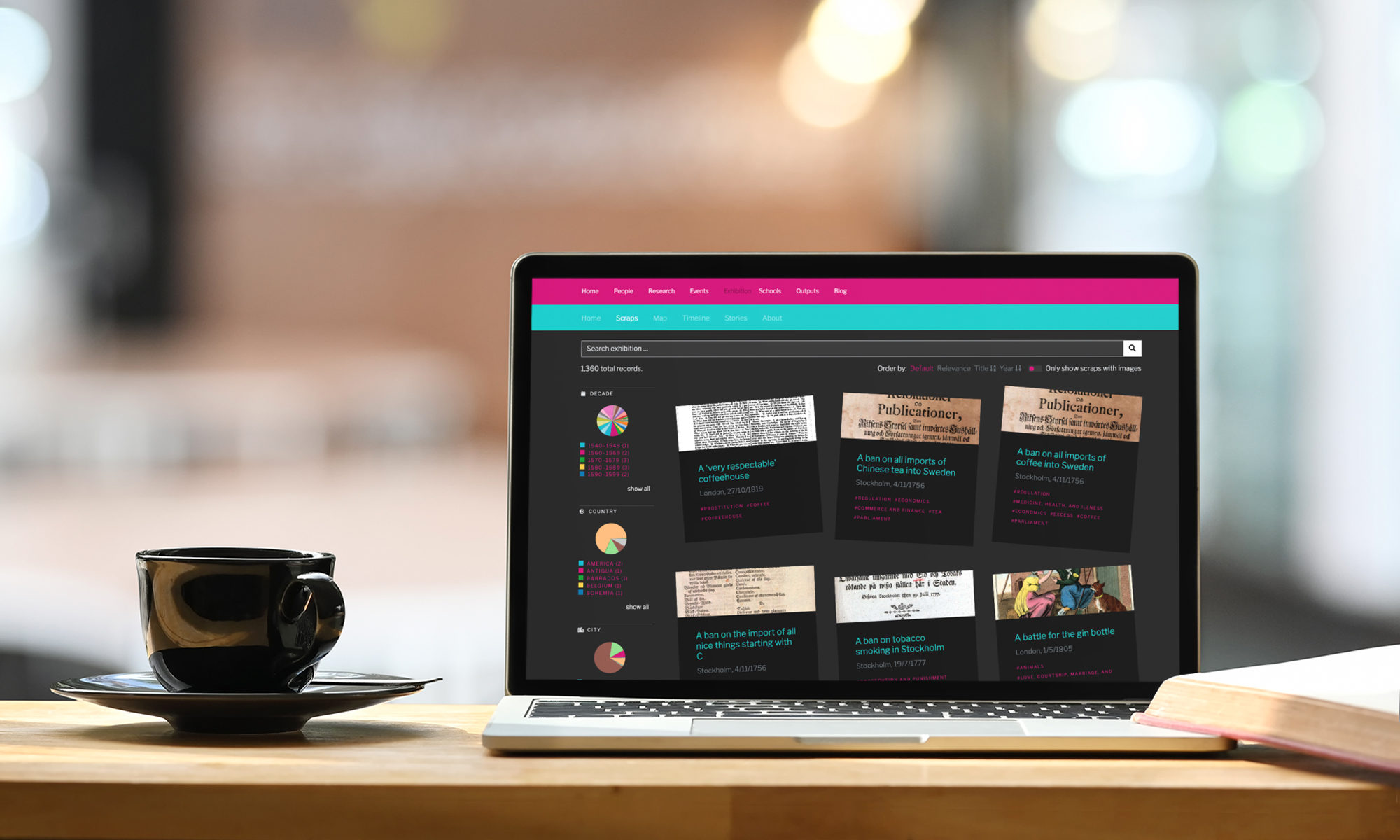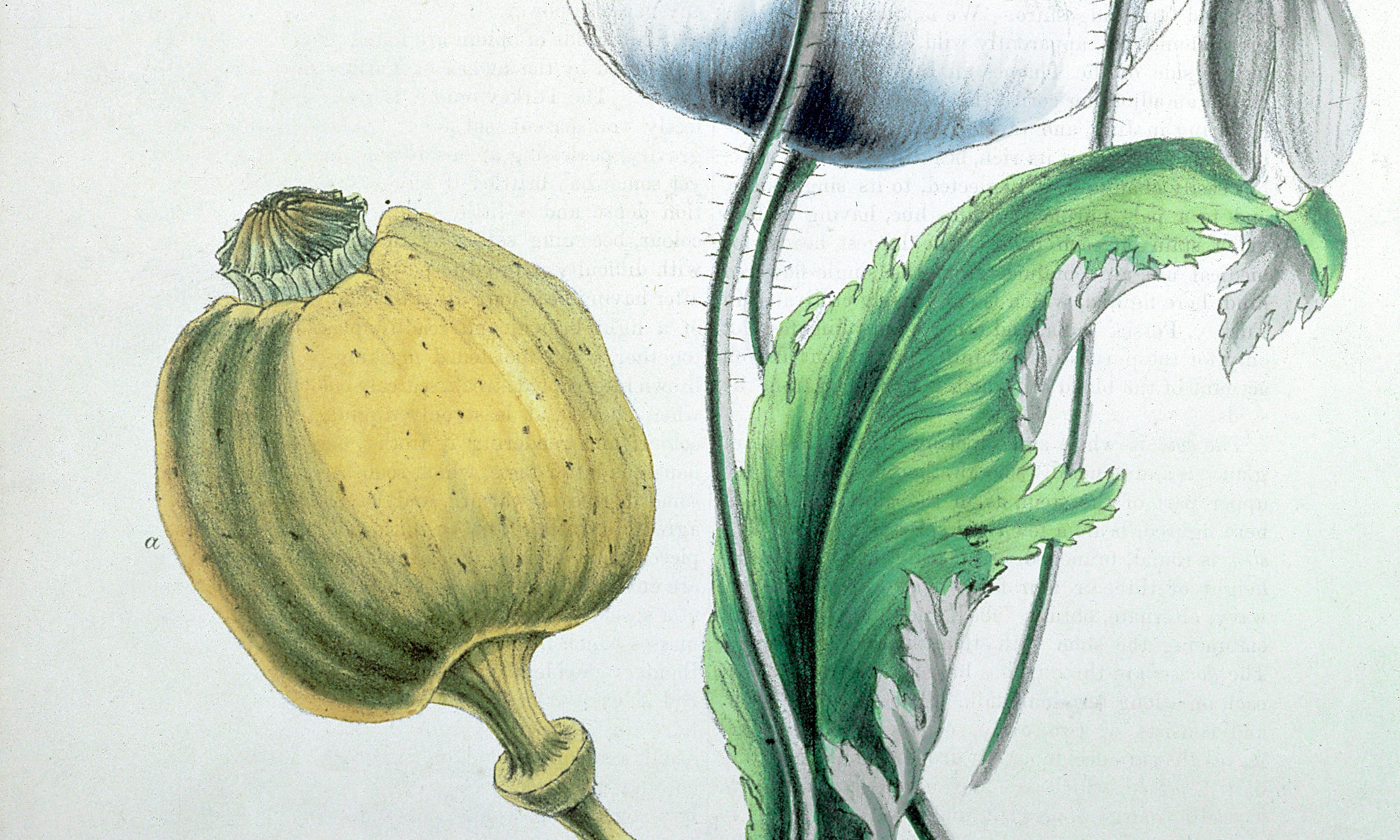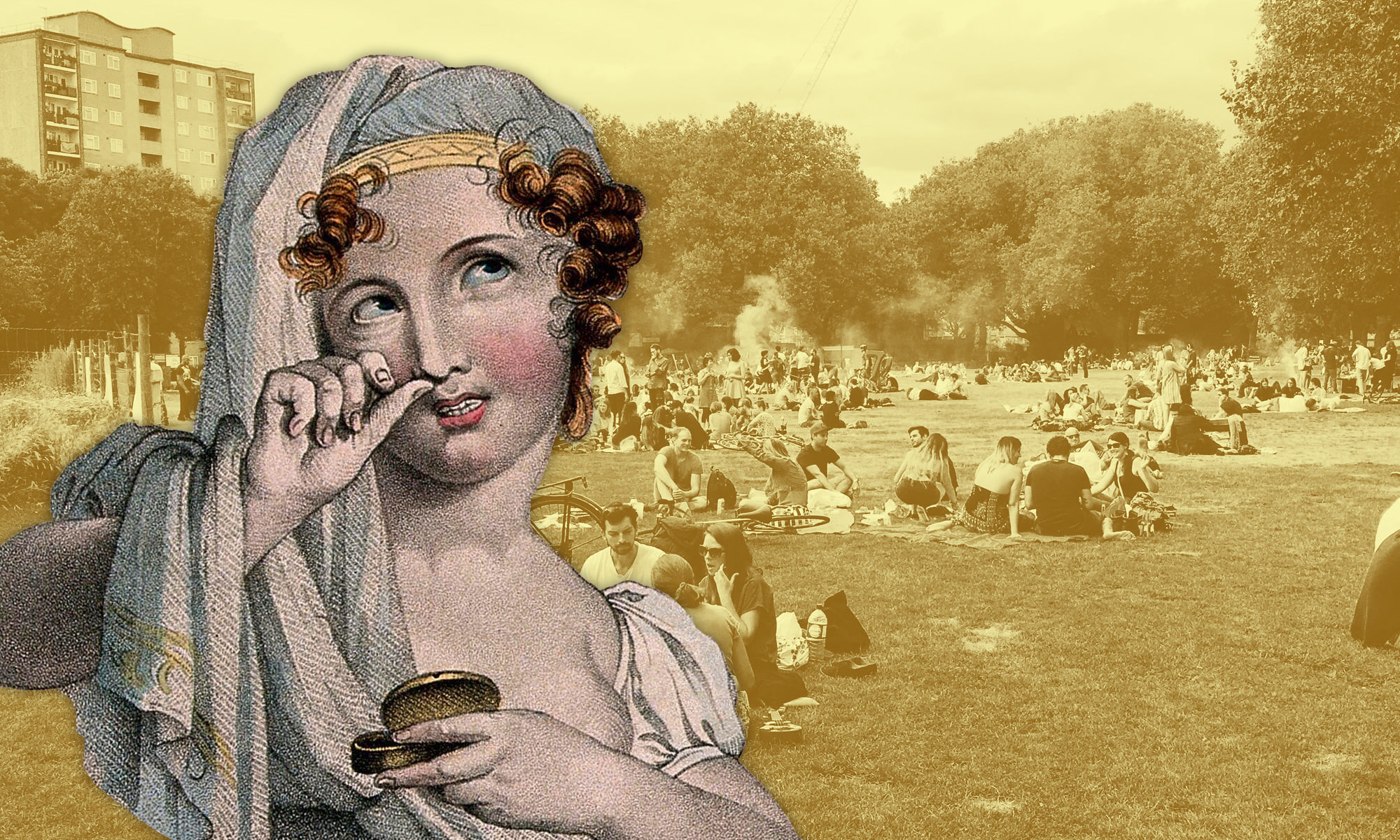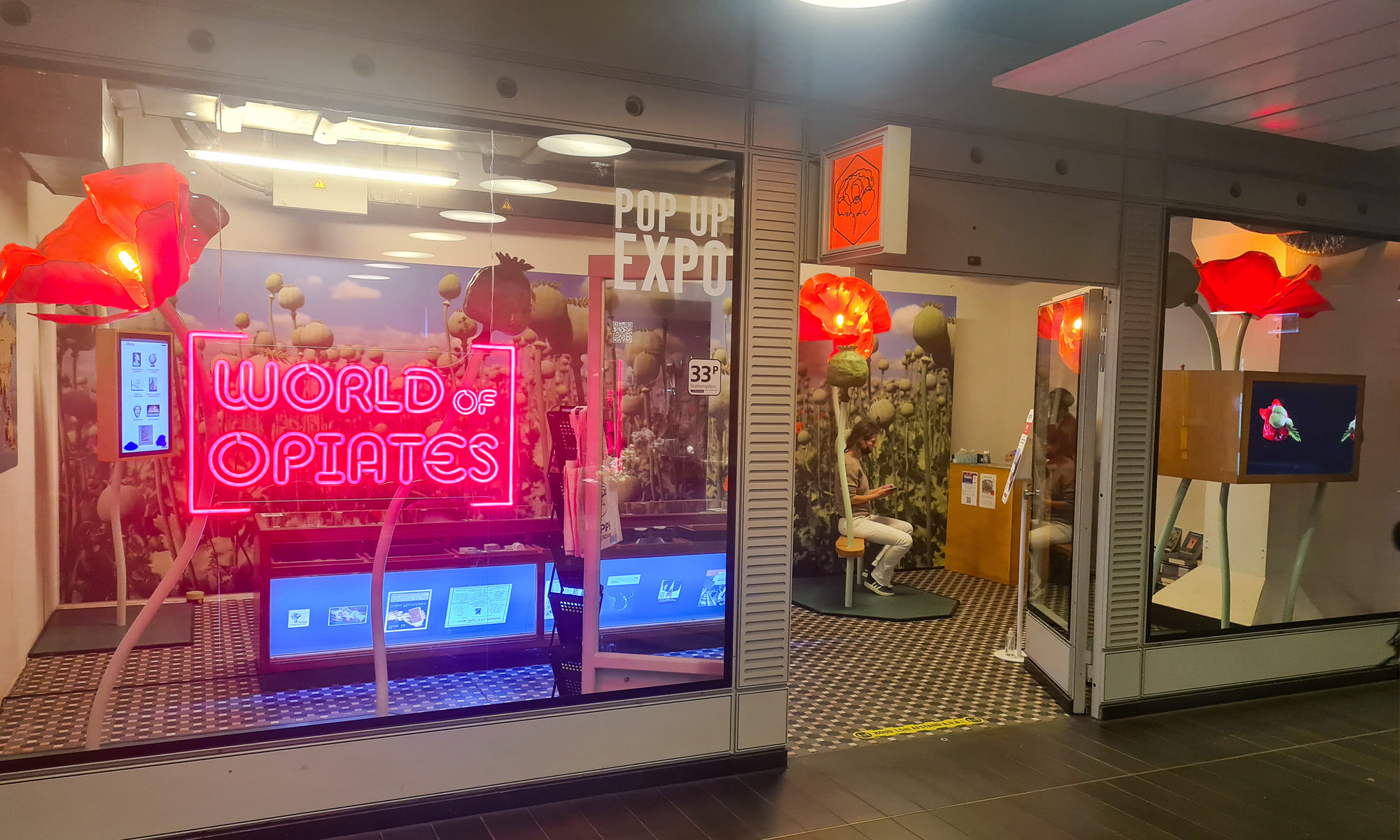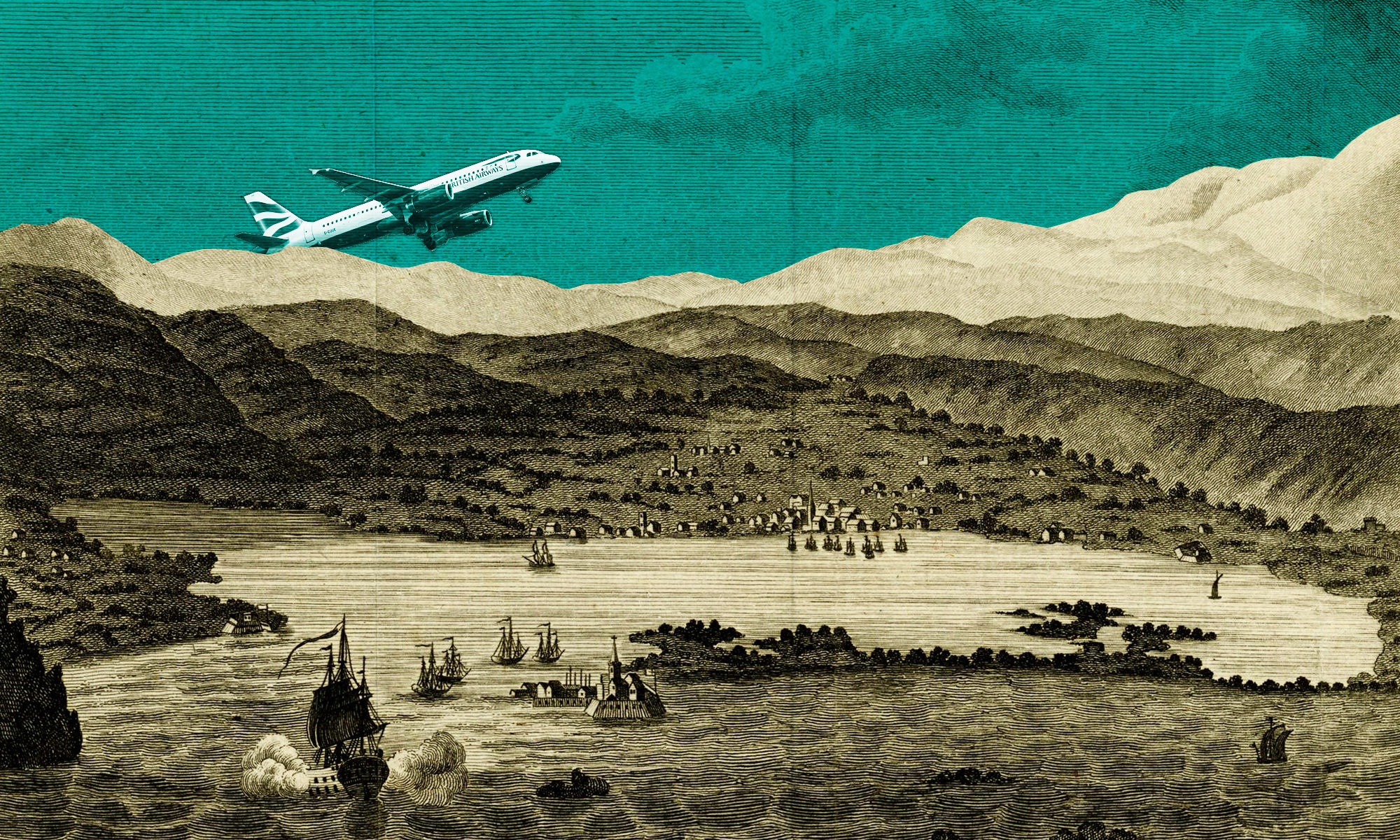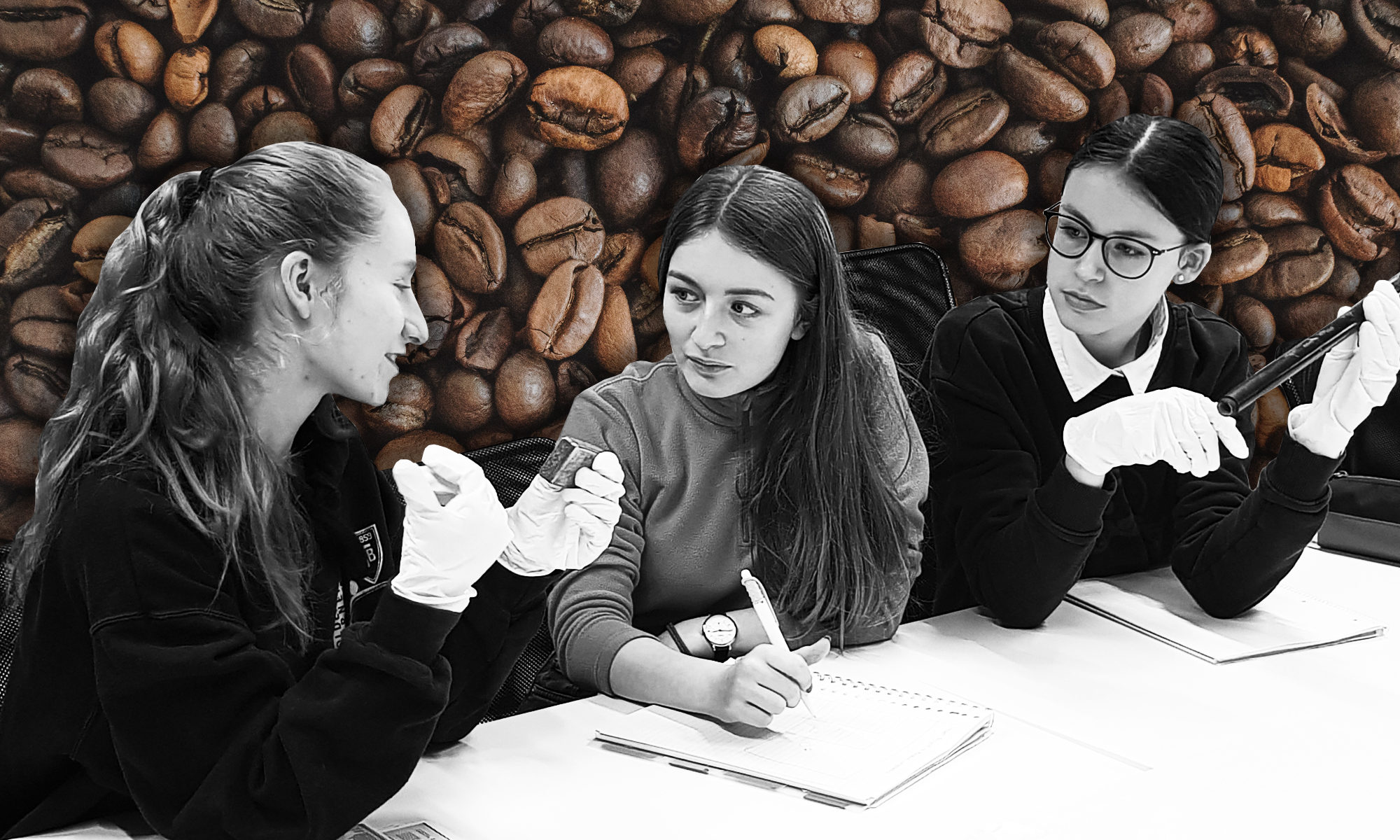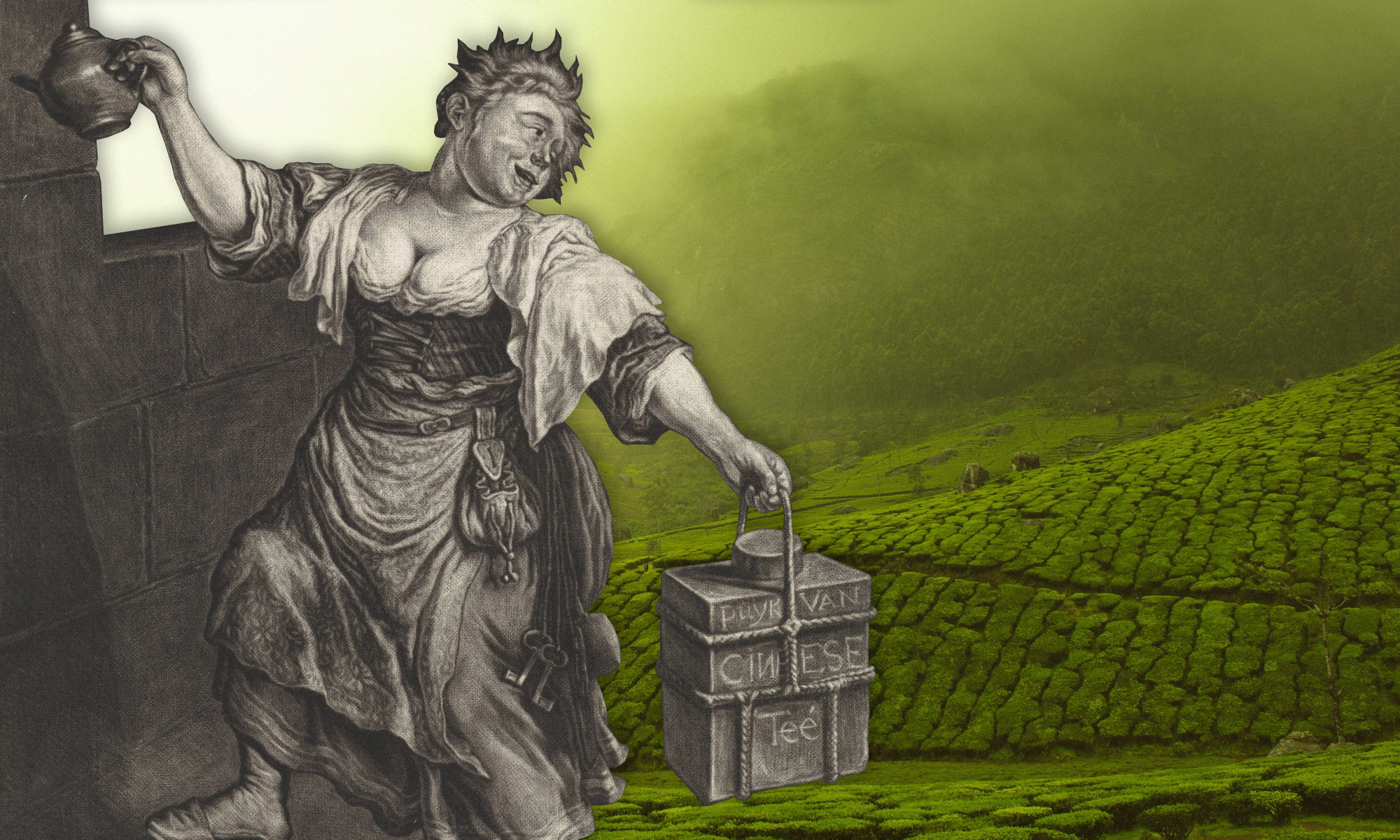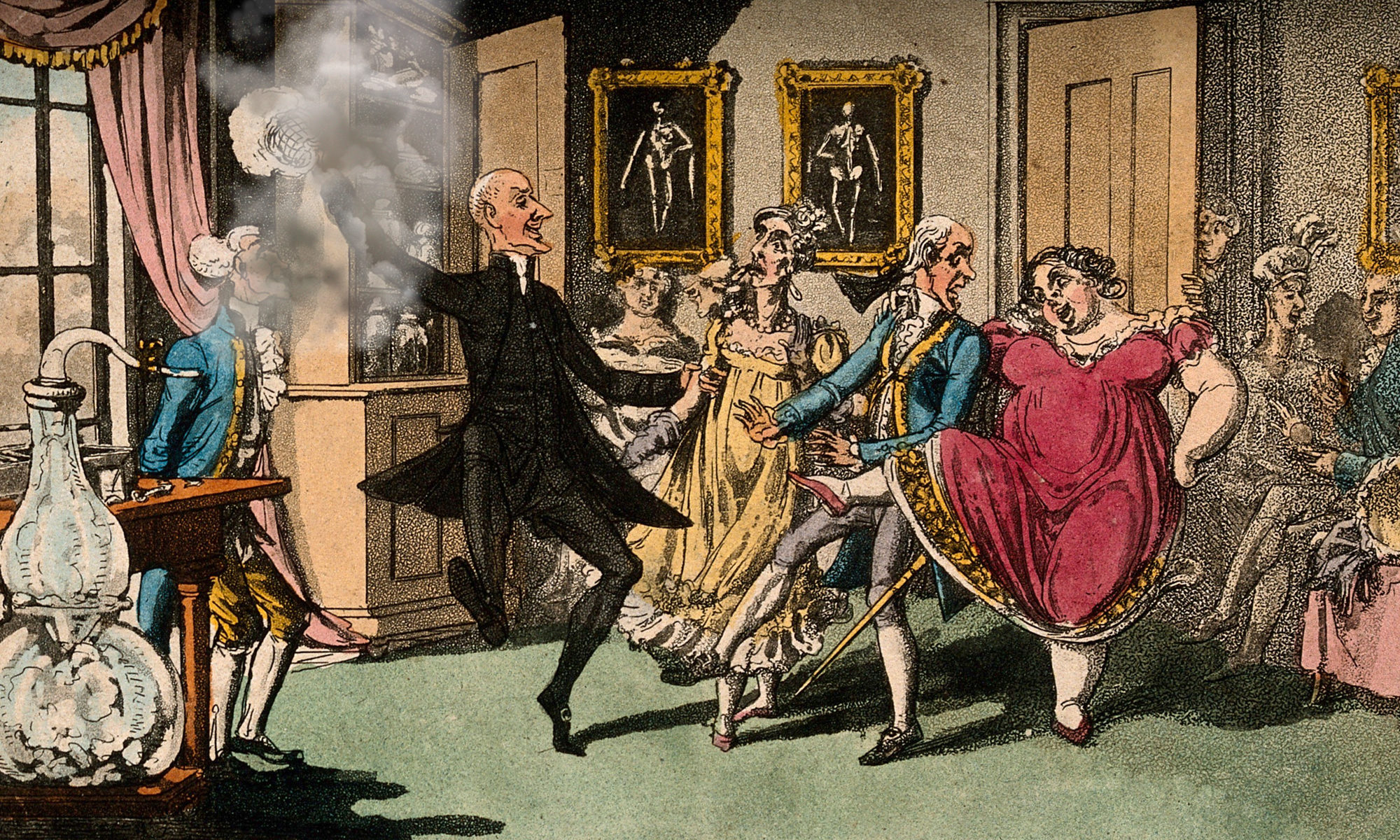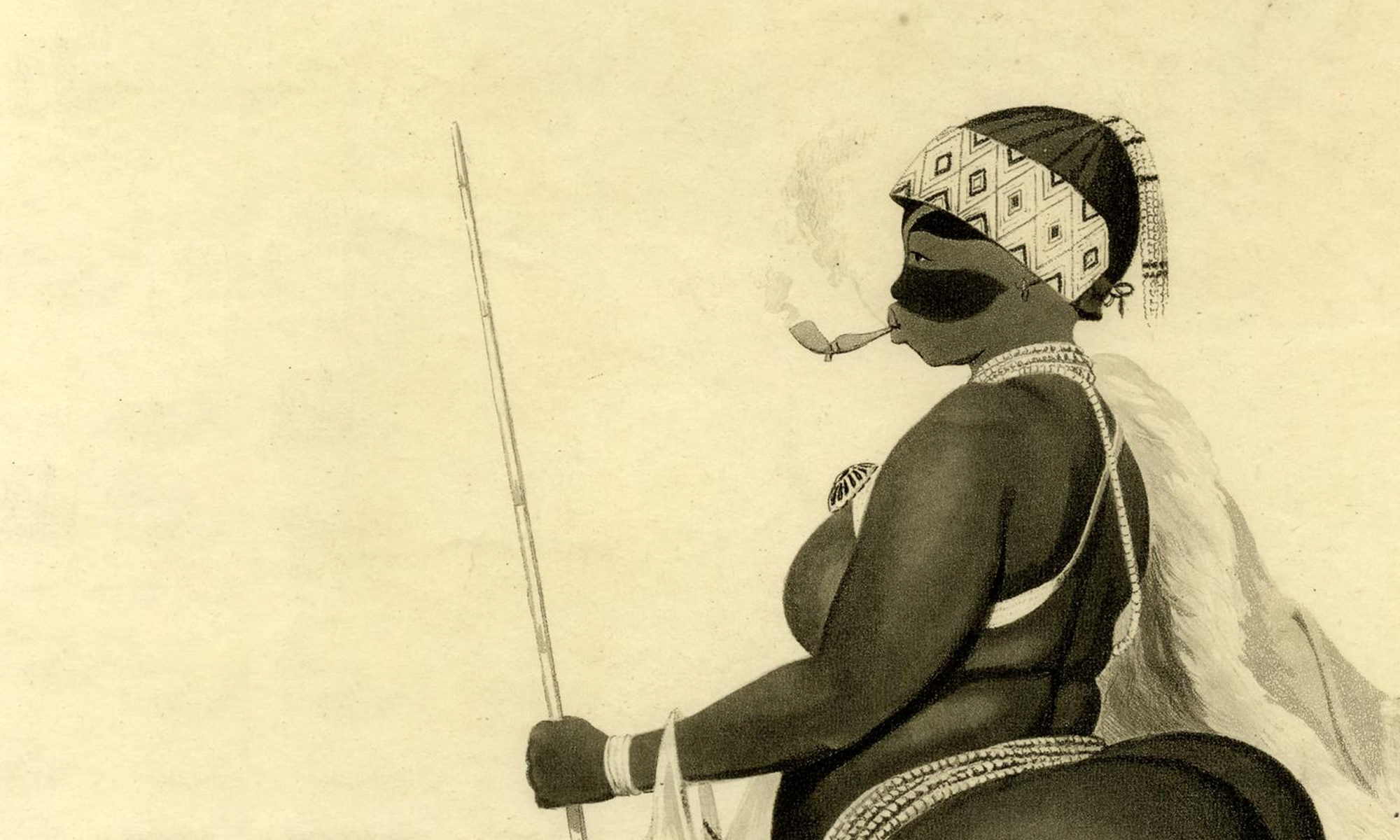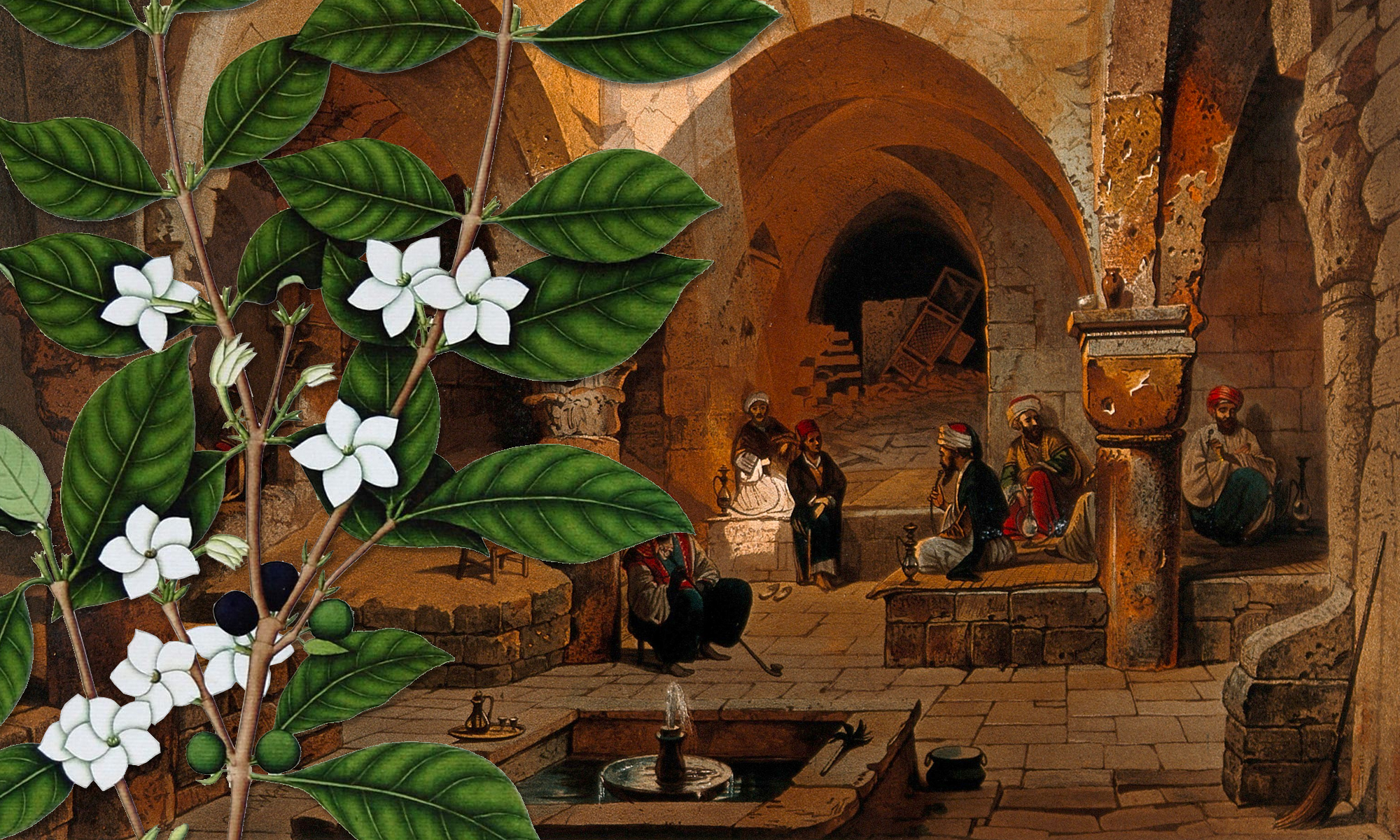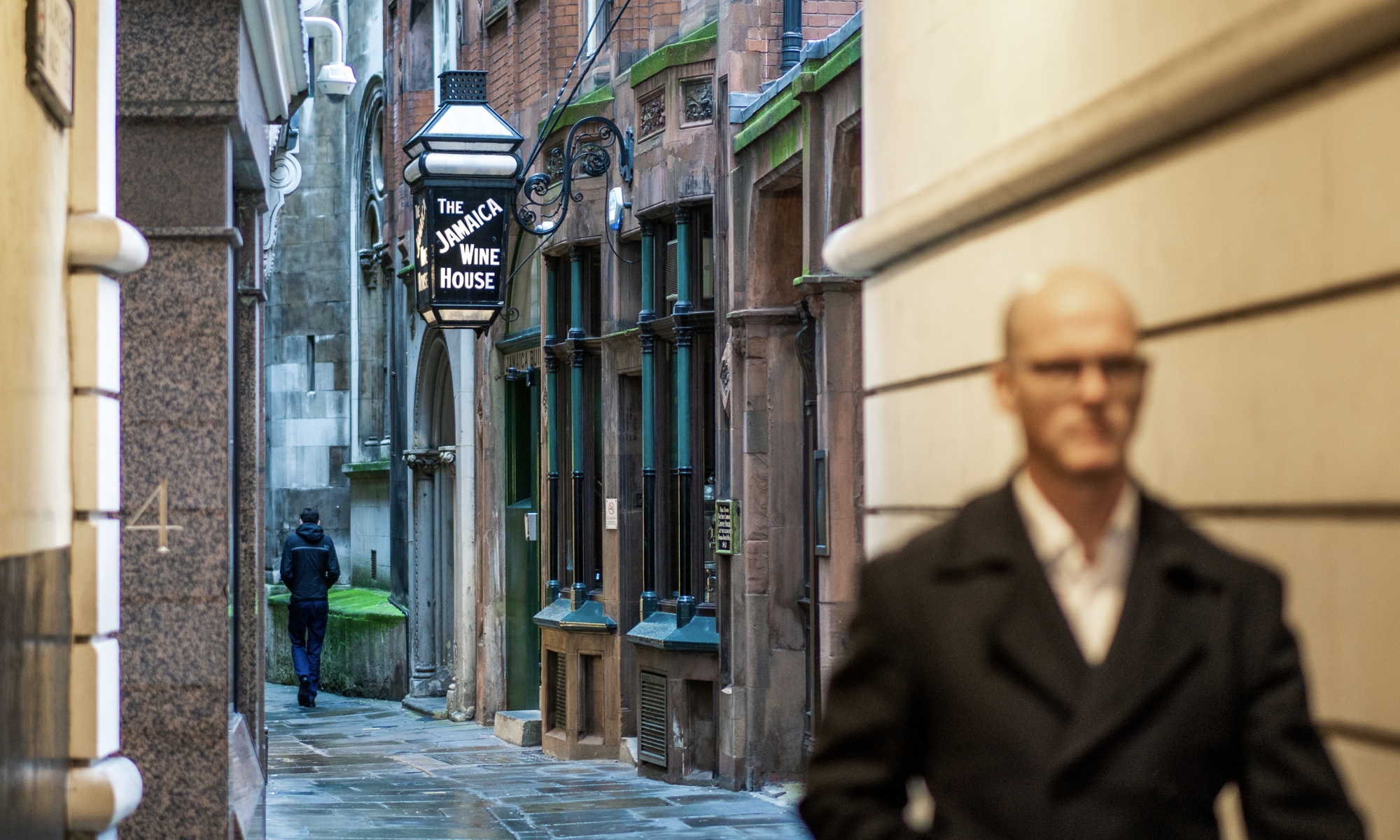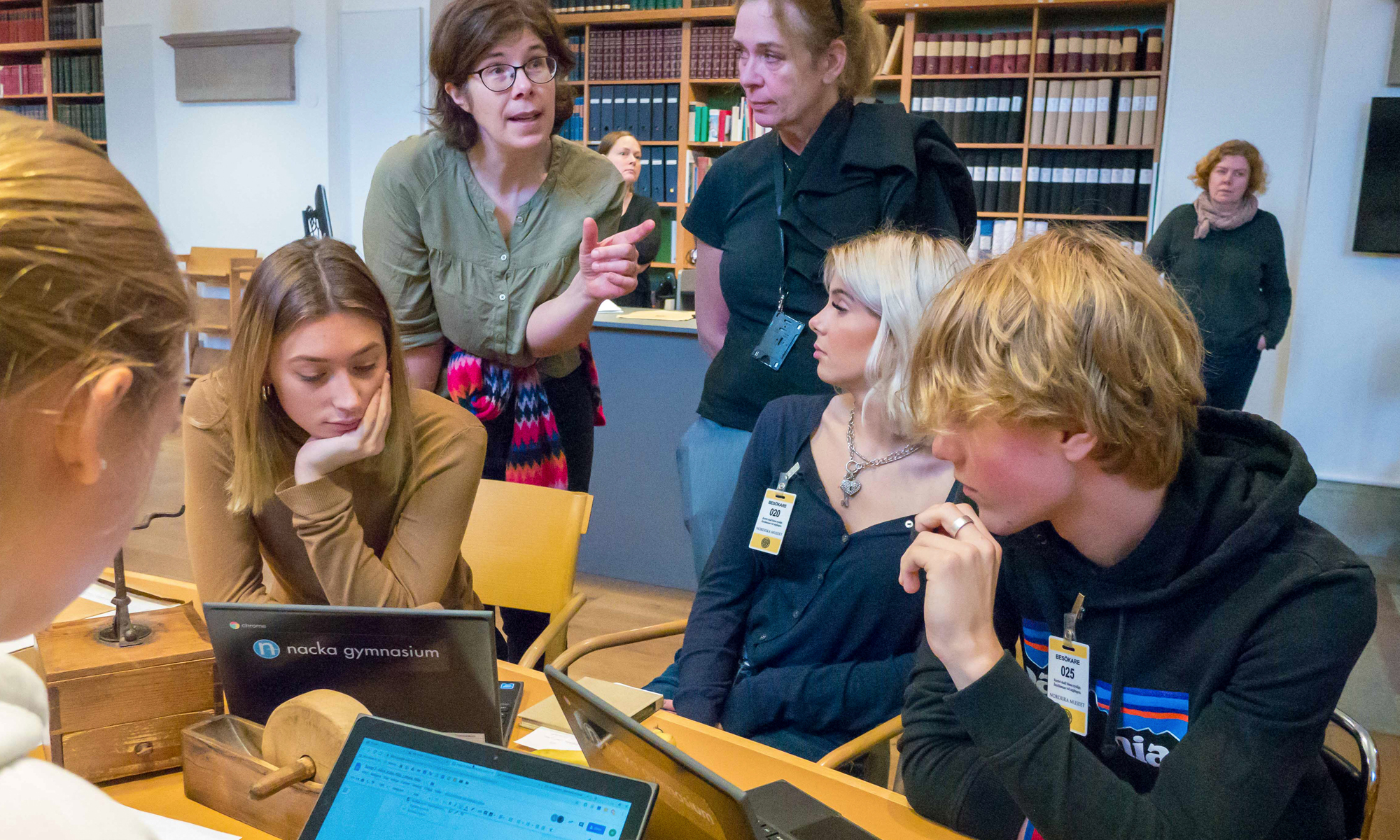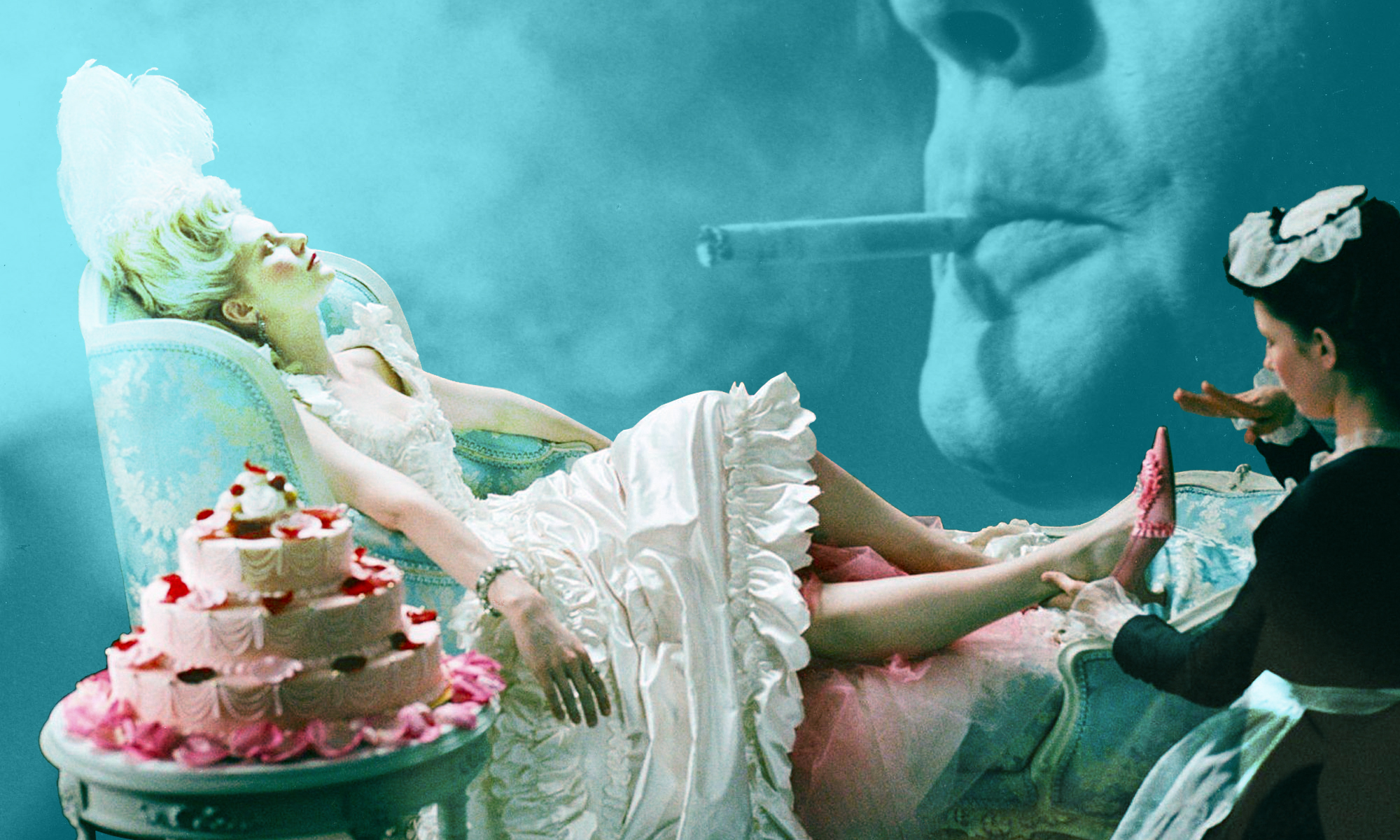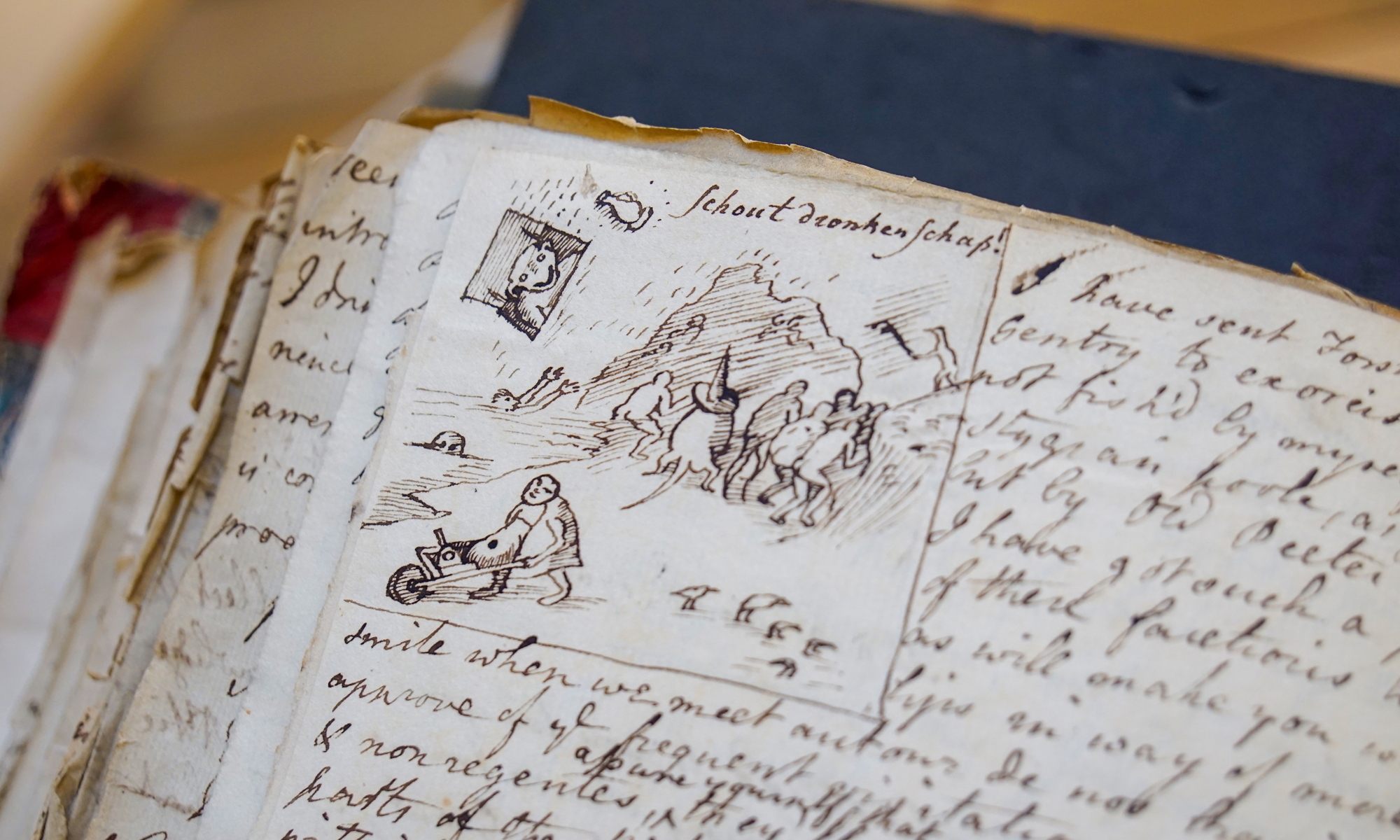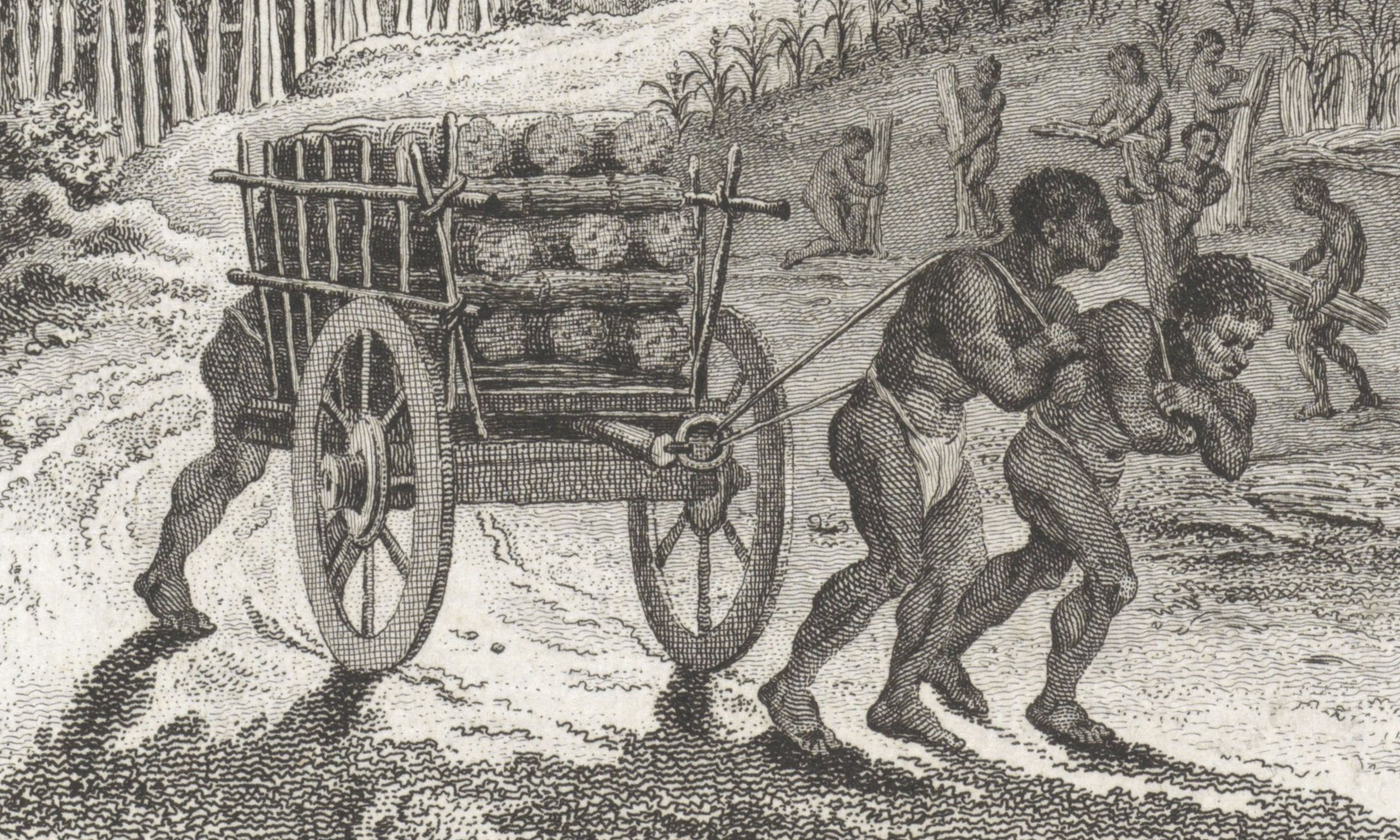Following a well-attended launch event last month, the project’s Virtual Exhibition is now live! Three years in the making, and conceived as a digital scrapbook, the exhibition brings together over 1,500 exhibits – or ‘scraps’ – from archives, libraries, and museums. All relate to the introduction, circulation, sale, enjoyment, and regulation of new intoxicants in sites and spaces across our case study cities of Amsterdam, Hamburg, London, and Stockholm. Designed to be used for research, teaching, or simply general interest, the exhibition provides an innovative and easy way to explore and compare the entangled histories of intoxicating spaces in the Baltic and North Seas. We hope you have as much fun using it as we had creating it, and do let us know what you think!
Worlds of Opiates Webinar
The project rounded out 2021 with a ‘big bang’ in Amsterdam, when work on opium by our Utrecht research team was translated into a unique project in public space: Worlds of Opiates, a pop-up exhibition co-created with artist Corne van der Stelt, Het Uitvindersgilde, and Poppi, a start-up drugs museum and social enterprise. Visitors to the show walk through an immersive field of giant 3D poppy flowers, and discover the many attributes of the most powerful flower known to mankind. Interactive elements tell stories about opium, laudanum, heroin, and painkillers, the same substance in different guises eliciting different societal responses.
Swings and Syringes: Intoxication and Public Space
Intoxicating substances are part of everyday life, especially during social interactions. At the same time, pressure on space in urban regions and cities is great; not only today, but also in the past. How do cities and urban populations past and present accommodate drug consumption and negotiate public space use? Whose voices are heard when it comes to policymaking about public space and substance use? Moreover, what happens when you bring historians, criminologists, political scientists, anthropologists, and practitioners from drug work together to discuss these questions? Back in October we gave it a try and invited experts from different backgrounds to join in a horizon-widening discussion based upon the fast-talk method, a focused and time-limited discussion designed to generate policy-relevant information.
Continue reading “Swings and Syringes: Intoxication and Public Space”
New Project Exhibition: Worlds of Opiates
From 3 December 2021–29 March 2022, our Utrecht research team will hold a free pop-up exhibition for the general public at Amsterdam Central Station, one of the city’s major thoroughfares. The interactive show, organised in conjunction with the Poppi Drug Museum and called Worlds of Opiates, invites visitors to explore the history of opium in Amsterdam and its associated public spaces in a global context. Drawing on the findings of the project, and incorporating data from the 1970s and 1980s produced by our HERA partner project Governing the Narcotic City and the Mainline Foundation for harm reduction, the exhibition features both physical and digital objects, as well as historic maps of opium distribution in Amsterdam. Visitors can open and investigate the drawers of an original apothecaries’ counter, watch slideshows, access additional information on their mobile devices via QR codes, or listen to lectures by historians on topics such as opium use among the eighteenth-century Dutch elite, early modern opium use in Scotland, or the drug’s connection with Afghanistan.
Continue reading “New Project Exhibition: Worlds of Opiates”
Slavery, Capitalism, and the Industrial Revolution: Sweet Industriousness and the Role of the Sugar Economy
In this lecture, co-organised with the Sheffield Centre for Early Modern Studies and delivered in person at the University of Sheffield on 7 October, Professor Maxine Berg (University of Warwick) previews material from her new book – co-authored with long-standing collaborator Professor Pat Hudson – on Slavery, Capitalism, and the Industrial Revolution. The book provides a new scholarly synthesis of ideas and research on the impact of slavery and British colonialism in the Americas on the economy of the metropole during the long eighteenth century. In the lecture, Professor Berg focusses on the chapter addressing the transatlantic sugar economy. She charts huge increases in sugar production and imports into Europe (especially in/from the East and West Indies), the industrial complex by which it was boiled and refined on plantations and in domestic factories, and its distribution via a network of grocers and confectioners.
Intoxicants and Early Modern European Globalization: The Making of a Special Issue
This month and next, The Historical Journal will be publishing a special issue dedicated to examining the relationship between ‘Intoxicants and Early Modern European Globalization’. Co-edited by me and Kathryn James, the open access volume consists of an introduction and eleven case studies unpacking the spaces, practices, and material culture that characterised the production and consumption of intoxicants in Europe, the Atlantic, and South Asia between the sixteenth and eighteenth centuries.
Object Lessons: Co-Creating an Exhibition with School Pupils and the German Maritime Museum
One ear-achingly chilly day in February 2020, forty-odd pupils from secondary schools in Oldenburg and Neu Wulmsdorf, three teachers and I descended on the German Maritime Museum (DSM) in Bremerhaven. Our mission? To explore the museum’s extensive collection of intoxicant-related historical treasures and to brainstorm ideas for an exhibition – researched and curated by students with assistance from staff at the DSM – on the history of tobacco, coffee, tea, chocolate, and sugar in port cities of the early modern period.
Tea: The Most Normal Thing in the World?
Alfa Academy Continue reading “Tea: The Most Normal Thing in the World?”
Workshop Report: Drugs and Drollery
It was an honour for the Wellcome Collection to join Intoxicating Spaces and a group of eminent scholars for an online workshop that took place on 21–22 January 2021 on Modes of Persuasion: Humour and the Promotion and Control of Intoxicants Past and Present. The workshop was originally suggested by Angela McShane while she was head of Research Development at Wellcome Collection. It was a good choice of subject, as the humorous treatment of stimulants and narcotics by promoters and controllers is a significant theme in the Wellcome collections. The main aim of the event was to show how playfulness, levity, satire, and wit have historically been used to inform campaigns and communications around licit and illicit drugs.
Thinking Visually with Saartjie Baartman: Intoxicated by Difference
Published on 18 September 1810, this etching of Saartjie Baartman (1789–1815), who had recently arrived in Britain and came to be known as the Hottentot Venus, testifies to the contemporary obsession with exoticism. Born among the Khoikhoi people of southern Africa, Baartman’s life is perhaps one of the most striking examples of colonial exploitation. Subjected to Dutch domination in her childhood and adolescence, she was objectified by the British in her youth, and was dehumanised by the French for the rest of her life and beyond. Histories of her display in the freak shows of London and Paris in the course of the long eighteenth century bring into focus torturous episodes of violence and humiliation. These were justified as legitimate scientific curiosity regarding her body, based on polite standards of respectability and refinement. Standing exposed on the imperial stage, Baartman’s (mis)treatment at the hands of the metropolitan populace overstepped the premises of Enlightenment virtues of dignity and propriety that were so dearly prized. The repatriation and reburial of her remains in 2002 in her homeland were acts of restoring of the vestiges of personhood that she had been denied by the western world.
Continue reading “Thinking Visually with Saartjie Baartman: Intoxicated by Difference”
CFP: Intoxicating Spaces: Global and Comparative Perspectives
An international conference organised and funded by the HERA research project Intoxicating Spaces: The Impact of New Intoxicants on Urban Spaces in Europe, 1600–1850, a collaboration between the University of Sheffield, the University of Oldenburg, the University of Stockholm, and Utrecht University.
Continue reading “CFP: Intoxicating Spaces: Global and Comparative Perspectives”
Intoxicating Spaces in the Time of Plague
In this brief vlog I discuss how we have responded as a research group to the challenges posed by COVID-19 and lockdown, and reflect on the historical relationship between pandemic, intoxicants, and public spaces. The film was shot in a safe and socially distanced manner on Devonshire Green and Division Street in Sheffield, and at Holy Cross Old Church in Whorlton, North Yorkshire.
Ground Level: Exploring London’s Historical Coffeehouses
One of early modern London’s most common intoxicating spaces was the coffeehouse; a 1739 survey by historian and topographer William Maitland identified 551 institutions in the capital (although the real figure was probably higher), while by the turn of the nineteenth century there were around 2,000 metropolitan establishments, making London the most caffeinated city in the world outside Constantinople. At a loose end before a meeting a couple of weeks ago, I decided to go in search of a handful of better-known City coffeehouses to see what remains of them within the urban landscape.
Continue reading “Ground Level: Exploring London’s Historical Coffeehouses”
8 Intoxicating Objects from Nordiska Museet
A key part of the Intoxicating Spaces project is our work with schools in the UK, Germany, the Netherlands, and Sweden. Back in October, a group of 30 pupils from our Stockholm partner school Nacka Gymnasium joined our Swedish research team at Nordiska Museet, Sweden’s largest museum of cultural history, for a day among their intoxicant-related holdings. Here, the pupils share their favourite discoveries…
Continue reading “8 Intoxicating Objects from Nordiska Museet”
Addictive Cinema: 17 Intoxicating Films for the Holiday Season
One of the central and most rewarding aspects of the Intoxicating Spaces project is our work with sixth formers from schools in Utrecht, Oldenburg, Sheffield, and Stockholm. We’re all film-lovers, so Stephen suggested we assemble for our participating pupils a ‘must-watch’ list of family-friendly movies that deal with drugs and intoxicants in time and space at various points in history. We’re pretty pleased with the resulting roster, so, with the holiday season looming and sofas and widescreens poised for action, we thought we’d share it on the blog as well! Let us know if we’ve missed anything…
Continue reading “Addictive Cinema: 17 Intoxicating Films for the Holiday Season”
Margin of Terror: Intoxicating Images and Eerie Etchings at the Bodleian Libraries
One of the key sources we’re using to reconstruct the intoxicating spaces of our four case study cities are the so-called ego documents that proliferated across our period: diaries, letters, memoirs, and travel accounts. Some of the UK’s best manuscript holdings of these sources can be found at the Bodleian Libraries in Oxford, so last week saw me on a train to the crisp and autumnal dreaming spires to work through a selection. Ensconced in the wonderful Weston Library, I started with London diaries – including that of a country parson from Oxfordshire who seems to have spent most of his time in the capital purchasing different varieties of tea from Twinings – and, having finished those, turned my attention to their excellent collection of seventeenth-, eighteenth-, and nineteenth-century correspondence. This consists of c.50,000 letters, all abstract-searchable within Early Modern Letters Online, an incredibly useful resource created by the Cultures of Knowledge project.
New Intoxicants, Slavery, and Empire in the Seventeenth- and Eighteenth-Century Dutch Atlantic
The history of new intoxicants is intimately connected to one of the darkest chapters in history: that on slavery, and the exploitative world economic system that sustained it. The increasing demand for consumables such as sugar, tobacco, and coffee in Europe was supplied by New World plantations run by white planters, managers, and overseers and cultivated by enslaved black workers from Africa. More than 12 million enslaved were forcibly transported between 1500 and 1865; an estimated 1.8 million died en route. There is a cruel irony at play here: when we miss our morning hit of caffeine, sugar, or nicotine and withdrawal symptoms set in, we should remember that the psychological and metaphorical ‘enslavement’ of millions to an intoxicant is the historical result of the physical and literal enslavement of millions of African workers and their trafficking to the Americas.
Introducing Intoxicating Spaces
Welcome to Intoxicating Spaces, a new, two-year, HERA-funded research project exploring the impact of cocoa, coffee, opium, sugar, tea, and tobacco on four European cities – Amsterdam, Hamburg, London, and Stockholm – between the seventeenth and nineteenth centuries! In this video, I briefly introduce the project, and explain what we’ll be up to over the next couple of years. Many thanks to Ivor and the team at Tamper Sellers Wheel coffeeshop in Sheffield for allowing us to film in their amazing venue!
